Originally published at: Budgeting in the Time of IRONMAN: Can You Race Full-Distance Triathlons Without Breaking the Bank? - Slowtwitch News
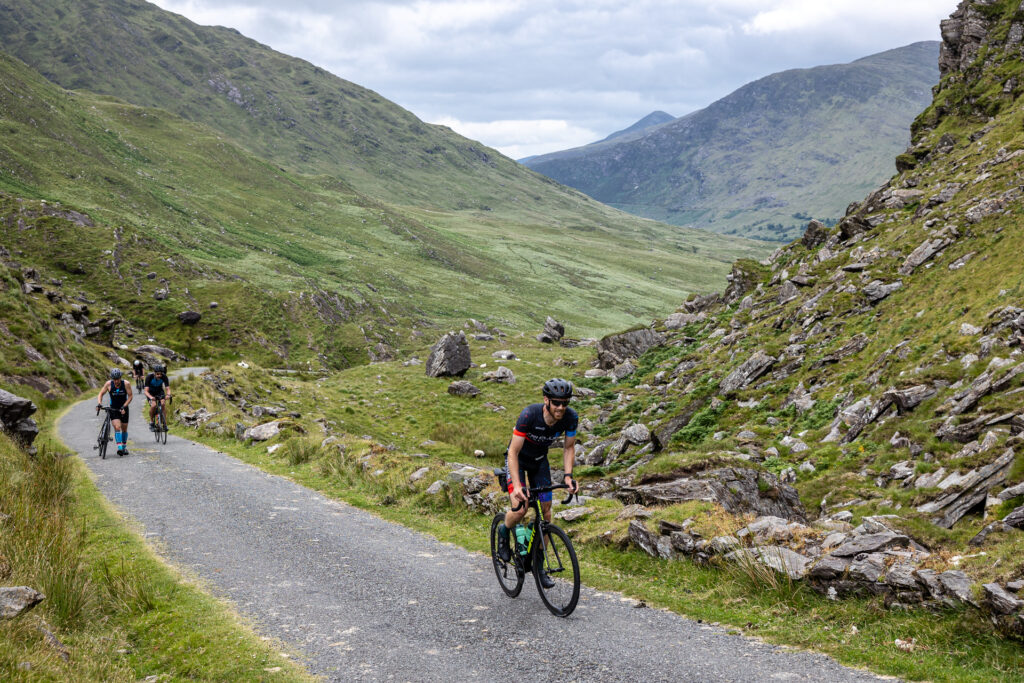
Athletes don’t have to break the bank to compete in a full-distance race. Photo: The Hardman
For decades, IRONMAN has been the race in triathlon. Not IRONMAN-distance races, but specifically IRONMAN-branded events. The organization has done such a great job with the its marketing that many people outside of the sport refer to the brand as the real branch of triathlon, with independent or shorter races simply considered stepping stones to an IRONMAN, the only event that matters.
This stellar marketing plan has led IRONMAN to become a globally recognized brand, with races on every inhabited continent and in dozens of countries worldwide. As the brand has grown, so have race registration fees, with the cost of racing an IRONMAN climbing north of $800 USD (or even more, depending on the event).
So many people want to specifically race IRONMANs, but there are plenty of independent full-distance races that offer the same challenge of an IRONMAN event, for a fraction of the cost. There is by no means anything wrong with wanting to race an IRONMAN, but if all you’re chasing is a challenge that will push you to your physical and mental limits, there are many cheaper options available.
Becoming Peasantman
Joe McMahon has been racing full-distance triathlons for more than two decades. This past August, he completed the 40th full of his career. He boasts quite the racing resume, but most of these events have been independent triathlons rather than official IRONMAN races.
“I did my first one, an independent, up in Montreal,” says McMahon, who lives in Rochester, NY. His second and third full-distance races also came north of the border, and then IRONMAN introduced an event in Lake Placid.
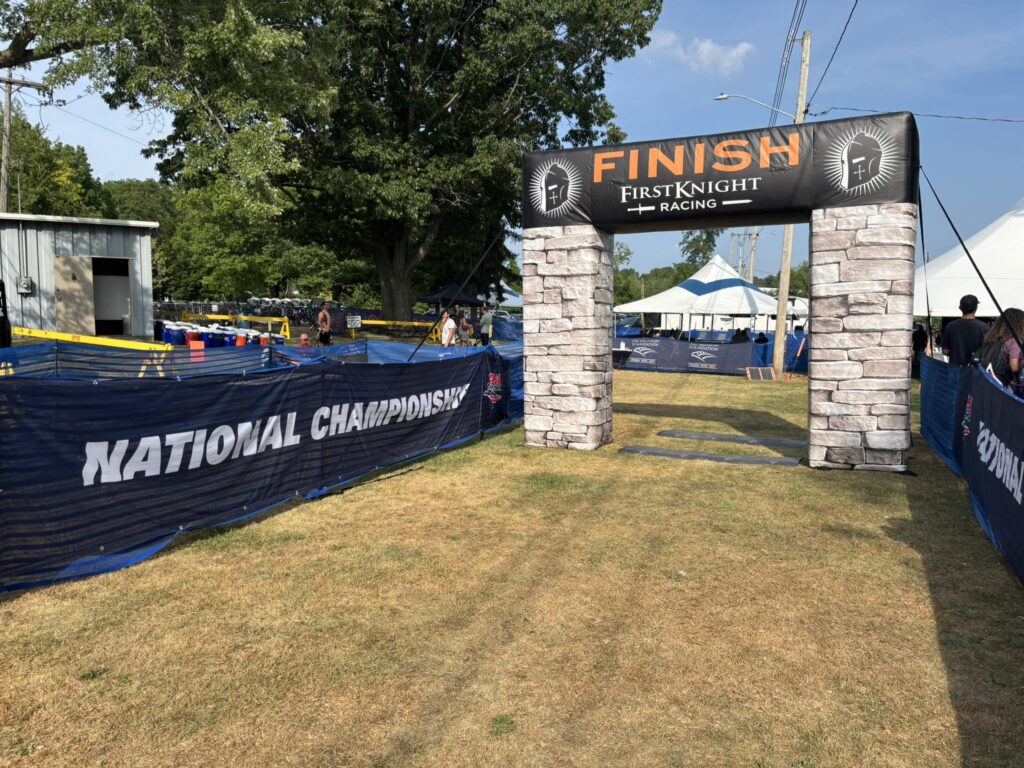
The Peasantman 2025 finish line in Penn Yan. Photo: Peasantman
Hailing from New York State himself, McMahon decided to give the race a shot. It didn’t speak to him.
“This is a big box store race,” McMahon says of IRONMAN Lake Placid. “This is all about the flash and cash. I never felt like more of a number than I did doing IRONMAN.”
He left Lake Placid feeling disillusioned with IRONMAN, but it wasn’t his last time racing with the organization. He raced in Lake Placid several more times as part of charity teams, raising money for various causes. (To date, McMahon has used races to help raise close to $1 million for charity.) After a few years, however, he decided he couldn’t support IRONMAN any longer.
“I just saw IRONMAN cranking the money up,” he says. “At one point, it was $475 [to race Lake Placid], and then all of a sudden it was $850.”
Having run several charity events around the state, McMahon had some experience as a race director, and he knew he could put on a full-distance event for much less than what IRONMAN charged. He acknowledges that IRONMAN can deliver a whole lot of “pomp and circumstance” at races, but he wanted to put on an event that was just about the challenge with none of the fluff.
“It’s always a race against yourself,” he says. “Always.”
McMahon set the race in Penn Yan, a small town about an hour south of Rochester, and mapped out the course. Like a traditional IRONMAN race, his race would kick off with a 2.4-mile swim and wrap up with a marathon, but the bike would be slightly longer — 116 miles rather than the usual 112 of a full-distance race. (Since it’s longer than a full-distance event, Peasantman qualifies as an ultra triathlon. The race hosted the USA Triathlon ultra-distance national championship in 2025.)
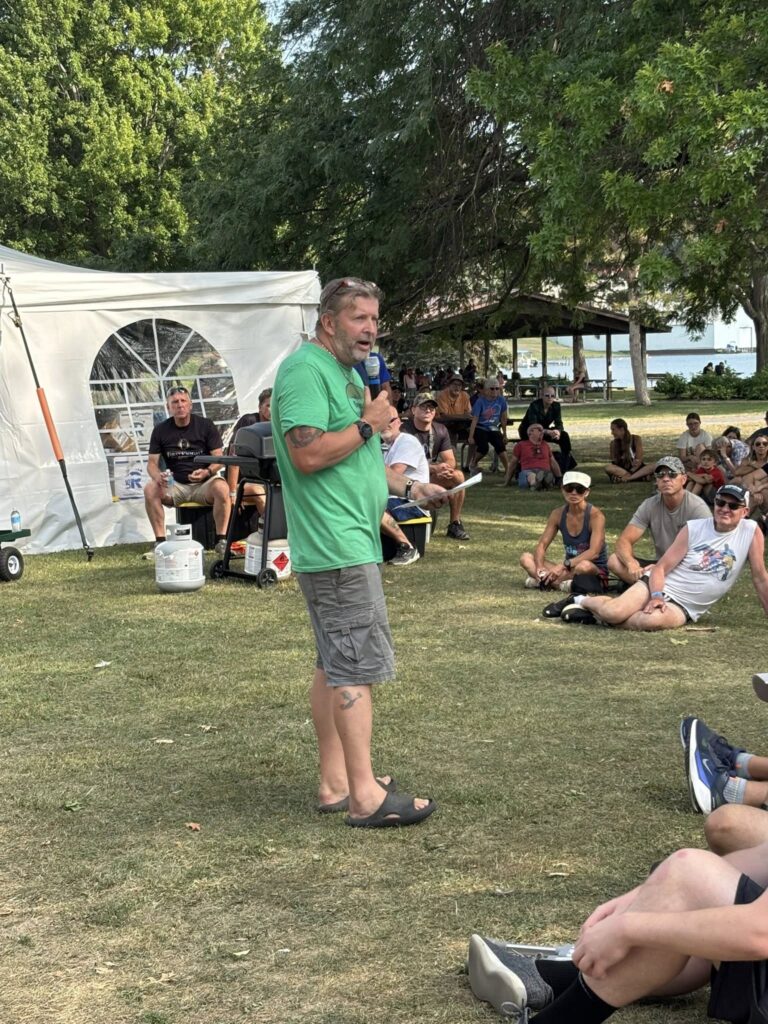
Peasantman race director Joe McMahon addresses the athletes ahead of the 2025 event. Photo: Peasantman
Since his triathlon was longer than an IRONMAN, McMahon dubbed the event a “steel-distance” race, “because steel is stronger than iron,” he says. That wasn’t the name he wanted for the race itself, however, and after some thought, he landed on what he says was the perfect choice.
“I said, ‘the bottom line is, when the royalty gets out of control, the peasants revolt,'” McMahon says with a laugh. “And there it is: Peasantman.”
More than a decade later Peasantman is still going strong. McMahon and his team at his event company, First Knight Racing, offer the “steel-distance” race, a half, an intermediate and a sprint, as well as aquabike, relay and duathlon variations of the regular triathlon formats.
And the cost to race? Early registration is just $350 for the full, while the most anyone will be charged to race is $485, and that’s only if they wait until the last minute to sign up. For comparison, IRONMAN 70.3 Musselman (a half-distance race held just 18 miles north of Peasantman’s race site in Penn Yan) costs $460.
“The name, the steel distance, all of it is a shot at IRONMAN and how much they charge,” says McMahon. While he’s more than happy to take jabs at the industry leader that is IRONMAN, his “driving force” behind it all was the individuals who would be racing.
“I want everybody to enjoy that experience of the last mile of a full-distance race,” he says. “It’s unforgettable, and I’ve always wanted everybody to be able to race.”
Philadelphia’s Ben Ulmer is one athlete who benefited directly from McMahon’s pricing philosophy. Ulmer has been doing triathlons for just over two years, and from the start he hadn’t really considered IRONMAN, or full-distance racing, as a legitimate option for him.
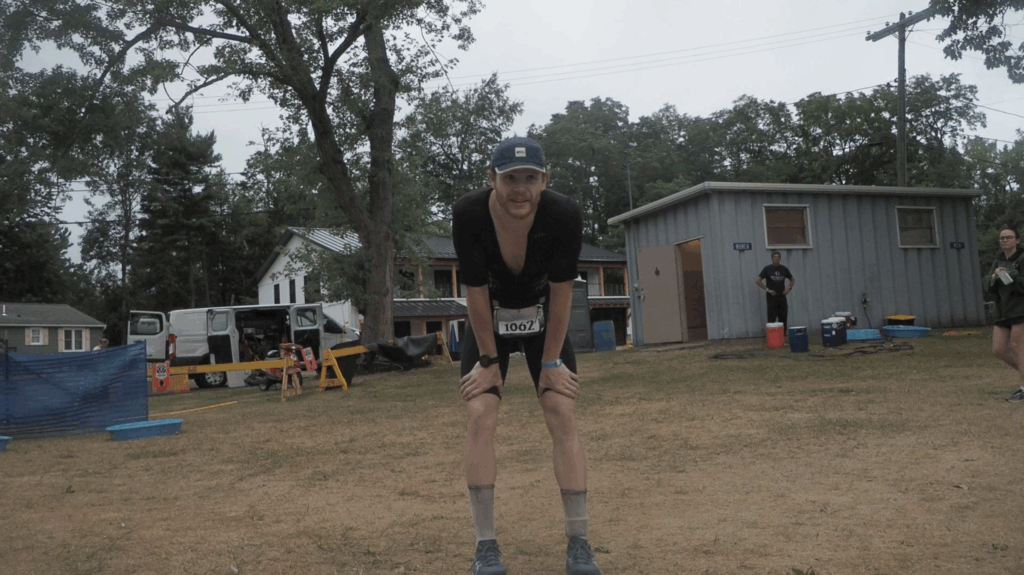
Ulmer finished Peasantman (his first full-distance race) in 12:50:54. Photo: Ben Ulmer
“When I first got into the sport, I was like, very, very broke,” he says. “I had the idea that, like, [IRONMAN racing] is not even accessible to me, so I had even considered just doing it solo an self-supported.”
Before diving into the idea of doing a solo full-distance triathlon (he says this is still an intriguing challenge that he might attempt in the future), Ulmer decided to look into IRONMAN alternatives.
“I Googled something like cheaper IRONMAN or something along those lines,” he says. This search led him to Peasantman, and he says the race was the perfect option for him. It was only a few hours from Philadelphia, it was affordable and it was the distance he wanted to tackle. He says that he realizes some people might find it “borderline necessary” to have the hyped-up energy of a “big race environment” like an IRONMAN, but for him, he was happy to do any event that was 140.6 (or, in the case of Peasantman, 144.6) miles.
In fact, Ulmer says he found the smaller, more intimate feel of Peasantman to be “more meaningful” to him.
“You can kind of feel isolated in a big crowd,” he says. “But at that small of a race, you almost recognized every single one of your competitors. It feels more personal in that regard.”
Ulmer finished Peasantman in 12:50:54 (he says he “kind of blew up” on the run). It was the first full-distance race of his young triathlon career, and it’s a challenge he might not have been able to pursue (in an official setting, at least) had IRONMAN-branded events been the only option available to him.
The Hardman
IRONMAN prices are not just a topic of conversation in the U.S. Like McMahon, Ireland’s Alan Ryan has been railing against the system for years. To combat what he believes to be unfair prices, he offers a full-distance race (and other shorter events) at a fraction of the cost of an IRONMAN.
Located in southwest Ireland, Ryan’s race is called The Hardman, and it costs just €200 ($230 USD) to enter. The Hardman has been around for 15 years, and although his budget for the race is a modest €16,000 (around $18,600 USD), Ryan says he manages “to lay it all on” for the athletes.
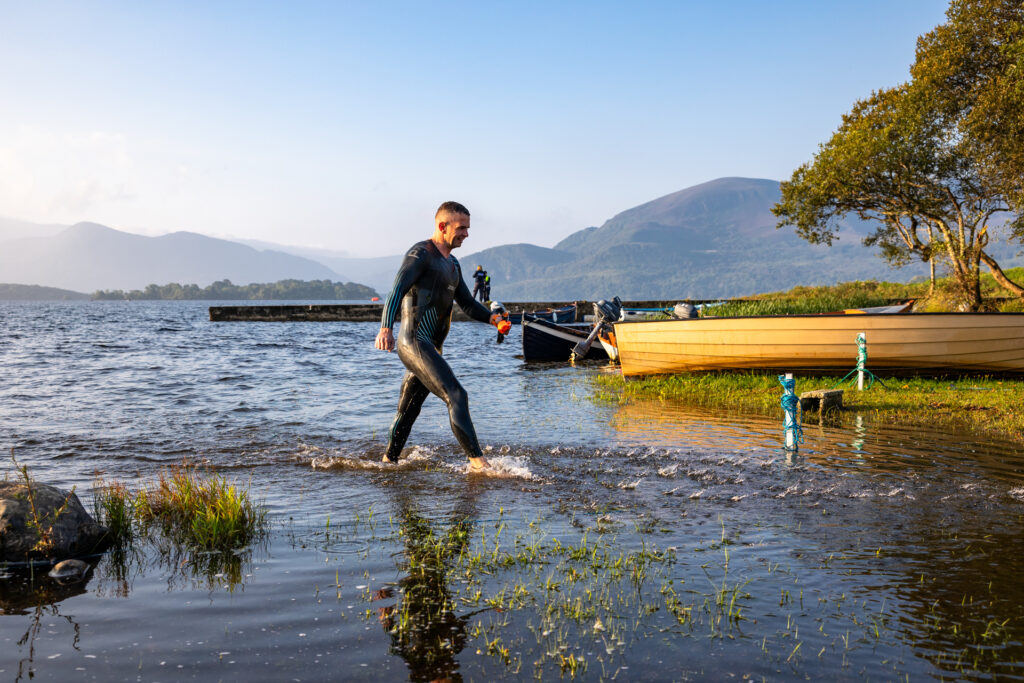
The Hardman kicks off with a swim in beautiful Killarney National Park. Photo: The Hardman
“They all get hoodies, they all get medals, they all get a free brunch the next morning,” he says. He even pays out prize money, not just to the top athletes (the overall winner gets €1,000, second earns €750 and third wins €600), but to the top three in each age group as well. (Age group prize money is €250, €150 and €100, respectively among the top three in each category.) Ryan also offers a €1,000 bonus to anyone who beats the men’s or women’s course records of 8:55 and 10:15.
How does Ryan manage to put on an event that is this affordable while also paying out thousands to dozens of athletes? First and foremost, he’s in the trenches, so to speak, with his team of volunteers.
“When I’m at a race I’m stuck in there,” he says. “I’ve got my boots on, I’m setting barriers the morning of the race and clearing them at 2 a.m. the next day afterward, I sit in the water to kayak if we’re short.”
Ryan says people ask him why he does all of this for so little payoff, but the answer is simple for him.
“I do it because I love it,” he says. “I earn a living and that’s all I’m after. I’m not in this to become a billionaire.”
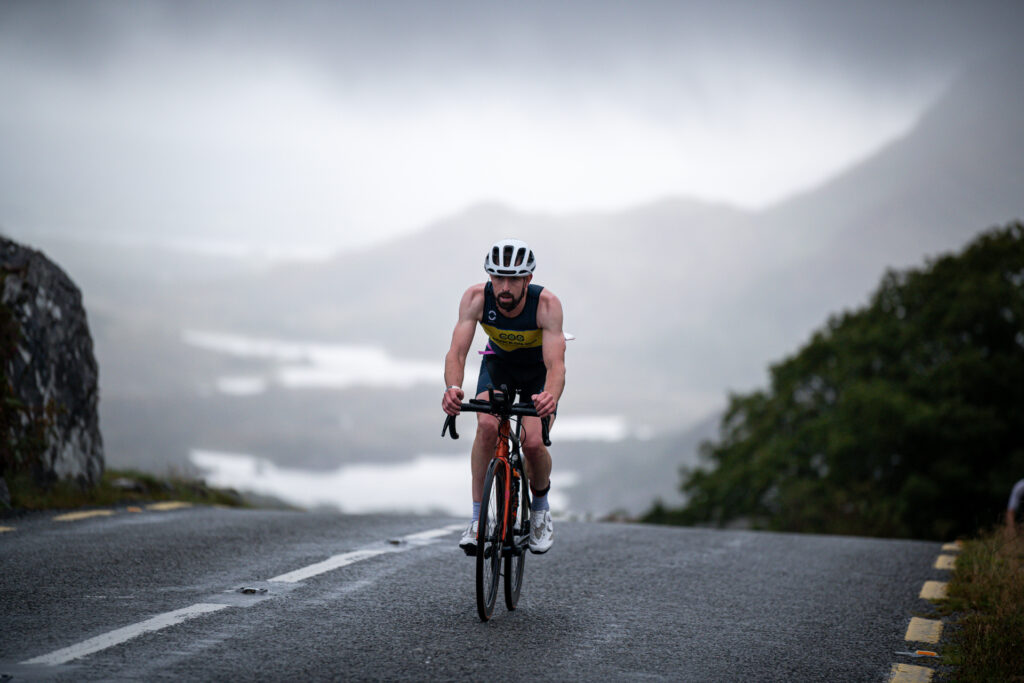
Second on the docket at The Hardman is a ride around the famed Ring of Kerry. Photo: The Hardman
On that note, he points to IRONMAN, a corporation that hosts tens of thousands across the globe at races, all of which charge much more than he does at The Hardman.
“I’m making enough to live, so I can only imagine what these guys at IRONMAN are making,” he says. In addition to running The Hardman and his other events, Ryan was elected as the vice president of Europe Triathlon.
When it comes to The Hardman itself, Ryan says he has the best setting for a race.
“The location was too perfect not to be used for a long-distance race,” he says. “If IRONMAN were coming back to Ireland, they would be doing my race if they could. Everyone who comes to visit Ireland comes here.”
The “here” in question is Killarney National Park, a spot that is indeed on most Must-Visit lists on Irish travel websites and blogs. The swim takes place in one of the Lakes of Killarney, the ride is on the Ring of Kerry and the run is a 10-lap route in the national park.
“They’re the three biggest tourist attractions in Ireland,” Ryan says.
All of this for a quarter of what an athlete would pay if it were an IRONMAN-branded race. But that raises another question that Ryan says he hears quite often.
“There’s a suspicion of a race like this,” he says. “If it’s that cheap, how can it be good?”
Firstly, Ryan has a firm cap on registration numbers. He will never accept more than 250 athletes for the full, as this is a number he is “comfortable with.” It’s a total that he knows he can allow into the race while still putting on a great event without having to make any concessions.
Secondly, he says that while the event may be small, the atmosphere is still raucous and electric.
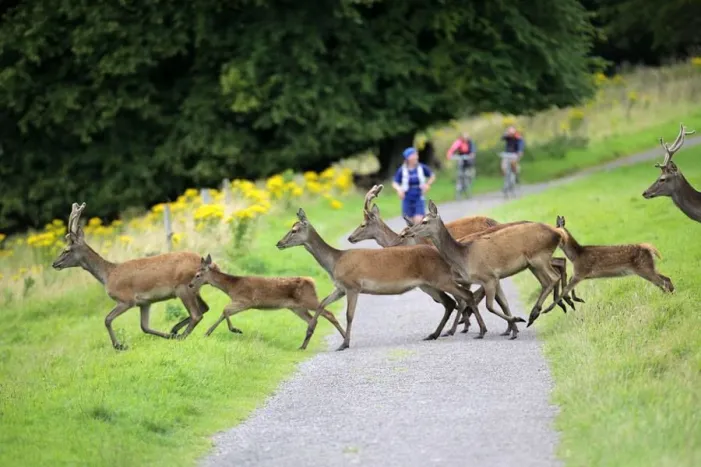
The Hardman really is in the middle of nature, giving athletes and spectators plenty of sights to take in. Photo: The Hardman
“We have a fantastic crowd in all races because everyone’s family is there and our friends are there and their club mates are there,” he says. And with only a few hundred people racing across the multiple events, Ryan says everyone gets to know one another, whereas (as Ulmer put it when speaking about Peasantman) at an IRONMAN or comparable event, each athlete is just another face in the massive crowd.
“The proof is there,” he says. “People come back year after year after year. And I have never gotten a bad review — not ever.”
And so…?
There certainly are pros to racing budget triathlons, none of which takes anything away from IRONMAN. It’s an organization that has inspired thousands upon thousands of people to chase their limits, to be better and, in many cases, to take up the sport. However, the company has grown so large that many people can’t see past it. Or maybe they don’t want to look beyond it. They want to race an IRONMAN, or nothing else.
If people did look around the corner to see what else is out there, though, they would find some amazing events. Events like The Hardman, Peasantman or one of the many other budget full-distance races that are available worldwide that will push your limits just like IRONMAN Wisconsin, IRONMAN Cairns, IRONMAN Hamburg or any other race with the always recognizable M-dot branding.
There is no right or wrong answer when it comes to racing triathlon. If you want to race an IRONMAN, go do it. But those events aren’t the only options out there, and it’s important for more people to realize that.